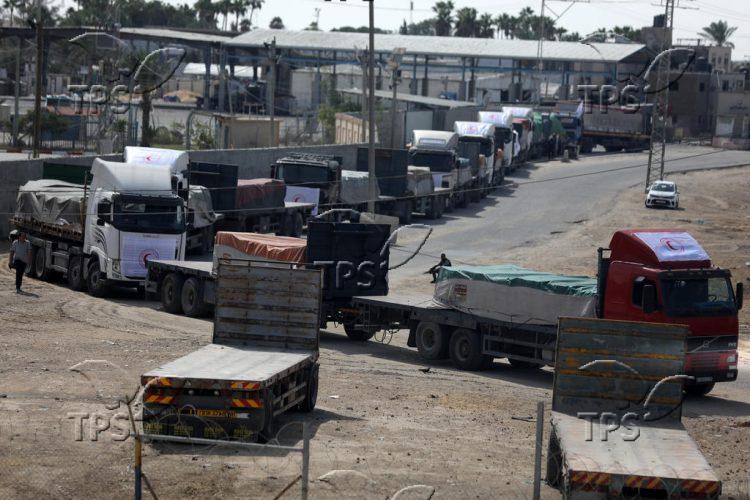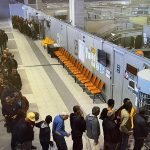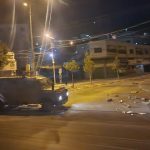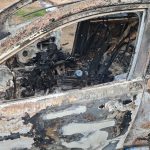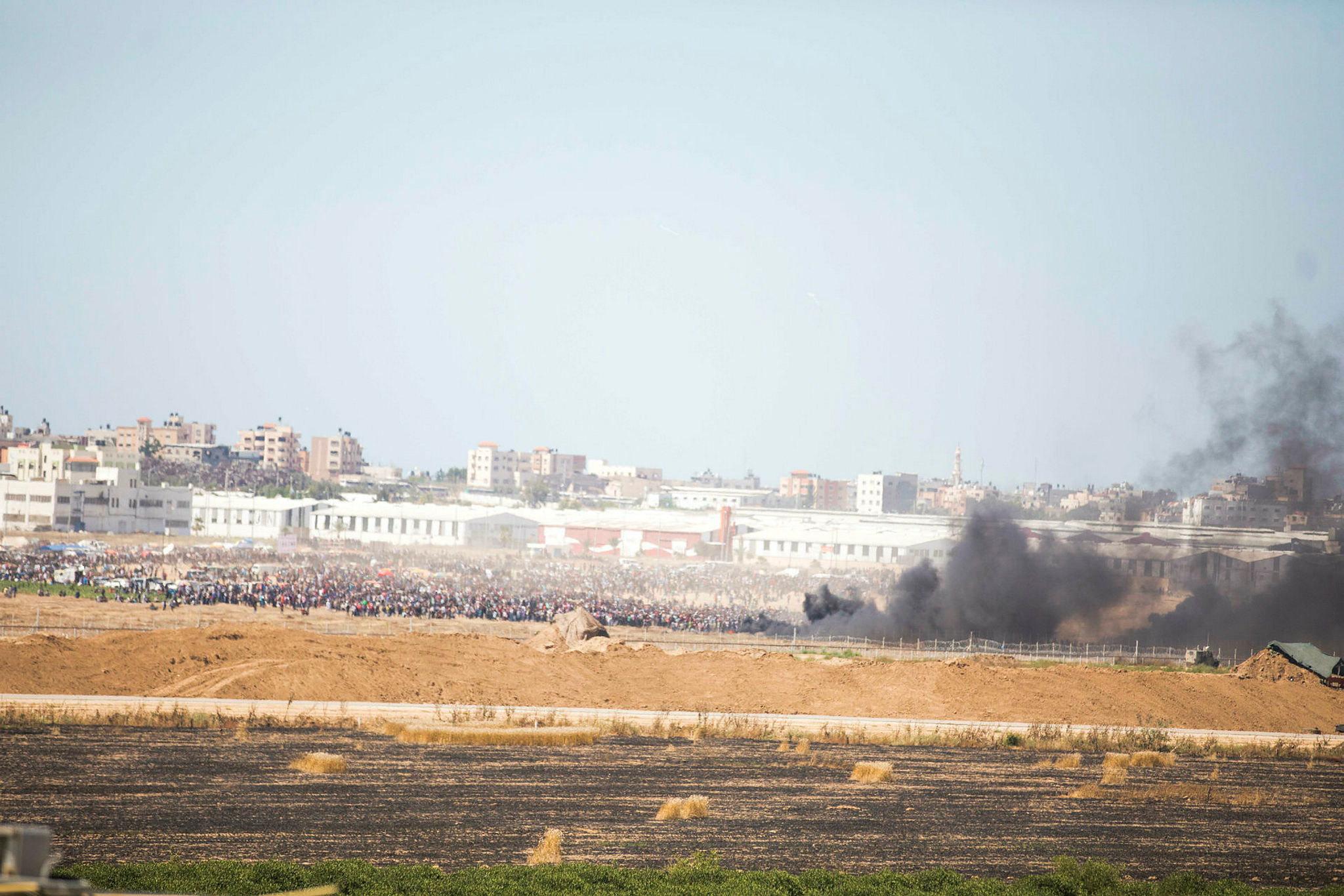How Effective is Israeli Inspection of Aid Flowing to Gaza?
Jerusalem, 3 November, 2023 (TPS) -- Trucks carrying goods into the Hamas-ruled Gaza Strip are being inspected by Israeli authorities at the Nitzana Crossing to Sinai in southern Israel, a former senior Israeli official told the Tazpit Press Service.
“They have the ability to check goods using advanced technology at the checkpoint. In the past they used sniffers and scanners,” said Col. (res.) Grisha Yakubovitch, a former head of the Civilian Department in the Defense Ministry’s Coordinator of Government Activities in the Territories (COGAT) unit.
The trucks are then escorted by Israeli forces some 30 miles to the Rafah Crossing between Egypt and Gaza to “ensure there is no interference” before they enter the Strip, added Yakubovitch.
Last month, Reuters cited an Egyptian Foreign Ministry statement as saying: “The trucks must be inspected at the Israeli Nitzana crossing before they head to the Rafah …, which causes obstacles that significantly delay the arrival of aid.”
COGAT previously stated that “only water, food and medical equipment” was being allowed into the Palestinian enclave, and that “all equipment was inspected before entering Gaza.”
The statement was issued after The New York Times on Oct. 22 cited U.N. official Stéphane Dujarric as saying that the first batch of aid to enter Gaza some three weeks ago had not been screened.
When contacted by TPS, a COGAT spokesperson declined to revisit the matter or confirm whether goods were indeed being searched at Nitzana.
“The inspection mechanism is a security-operational matter,” said the spokesperson.
Eylon Levy, spokesperson in the Prime Minister’s Office in Jerusalem, recently told TPS, “We do have an ability to make sure aid is not being smuggled to Hamas, that [the terror group] is not using humanitarian corridors in order to smuggle war materiel.”
Earlier this week, the Prime Minister’s Office said that goods sent to Gaza provide Israel with “important leeway in which to act to realize the goals of the war,” and reiterated that they are intended only for non-combatants.
Gershon Hacohen, who retired with the rank of major-general after serving in the IDF for 42 years, told TPS that this was unrealistic. “We’re at war, and in times of war there is no true or efficient way to control where the aid goes,” he said.
U.N. Secretary-General António Guterres has called for the verification system for the movement of goods through Rafah “to be adjusted to allow for more trucks to enter Gaza without delay.” Guterres also raised the issue of fuel being allowed into Gaza.
The Rafah crossing is not equipped to handle large numbers of commercial deliveries. Before Oct. 7, commercial deliveries to the Strip from Egypt were routed through Israel’s Kerem Shalom crossing, which is adjacent to the Egypt-Gaza border. The Kerem Shalom crossing is closed for security reasons.
Hamas Operations Rely on Fuel
Yakubovich explained that hoarding fuel was part of the Hamas planning of the Oct. 7 cross-border massacre that killed more than 1,400 people and wounded thousands more. “They bought millions of liters from Egypt. Sure, some of it went to the power plant and the hospitals but they also kept massive reserves,” he said.
The supposed “fuel crisis” in Gaza is just “Hamas’s newest fake news,” he added, “and now that they pulled this card on the international community, we will hear the whole world talk about it.”
Israeli authorities released on Oct. 24 released aerial images of Hamas storage tanks in Gaza containing at least half a million liters of fuel. On Wednesday, the IDF shared an intercepted phone call confirming Hamas is stealing fuel from civilians and hospitals.
Yakubovich said that Hamas has been pocketing money from the Palestinian Authority budget and from Qatar and using it to buy diesel fuel from Egypt. “Of the $30 million monthly aid Qatar used to send Hamas, $10 million alone was used to buy fuel,” he said.
“Every single aspect of Hamas’s operation relies on fuel, it is the oxygen they need to move underground and build rockets,” he added. “I’ve even seen them using ambulances and firetrucks to move terrorists around.”
Col. (res.) Miri Eisen said, “Hamas has been building for the last 10 years an underground system that needs electricity, water and air. They have no problem making the situation in the Gaza Strip worse. That serves their purpose.
“Hamas’s manipulation consists of boosting numbers of casualties and constantly hyping the humanitarian crisis,” added Eisen.
Middle East expert Guy Aviad emphasized to TPS that Hamas has ruled the Strip since 2007. Had Hamas focused on economics instead of terrorism, Gaza would be prosperous, according to Aviad.
“For example, the Qataris constructed a new city near Khan Younis in the southern part of the Strip on behalf of [former Emir] Hamad Bin Khalifa Al Thani. The apartments are better than mine. The UAE, the Turks, the Indonesians and the Kuwaitis all invested in Gaza,” said Aviad.
Yakubovich noted that “half a billion dollars was being brought annually to Gaza by 17,500 Palestinians [permitted to work in Israel] that could have been used to create a better future and support the economy.
“The reality of Gaza is that everything, and I mean everything, goes to Hamas,” he said.

